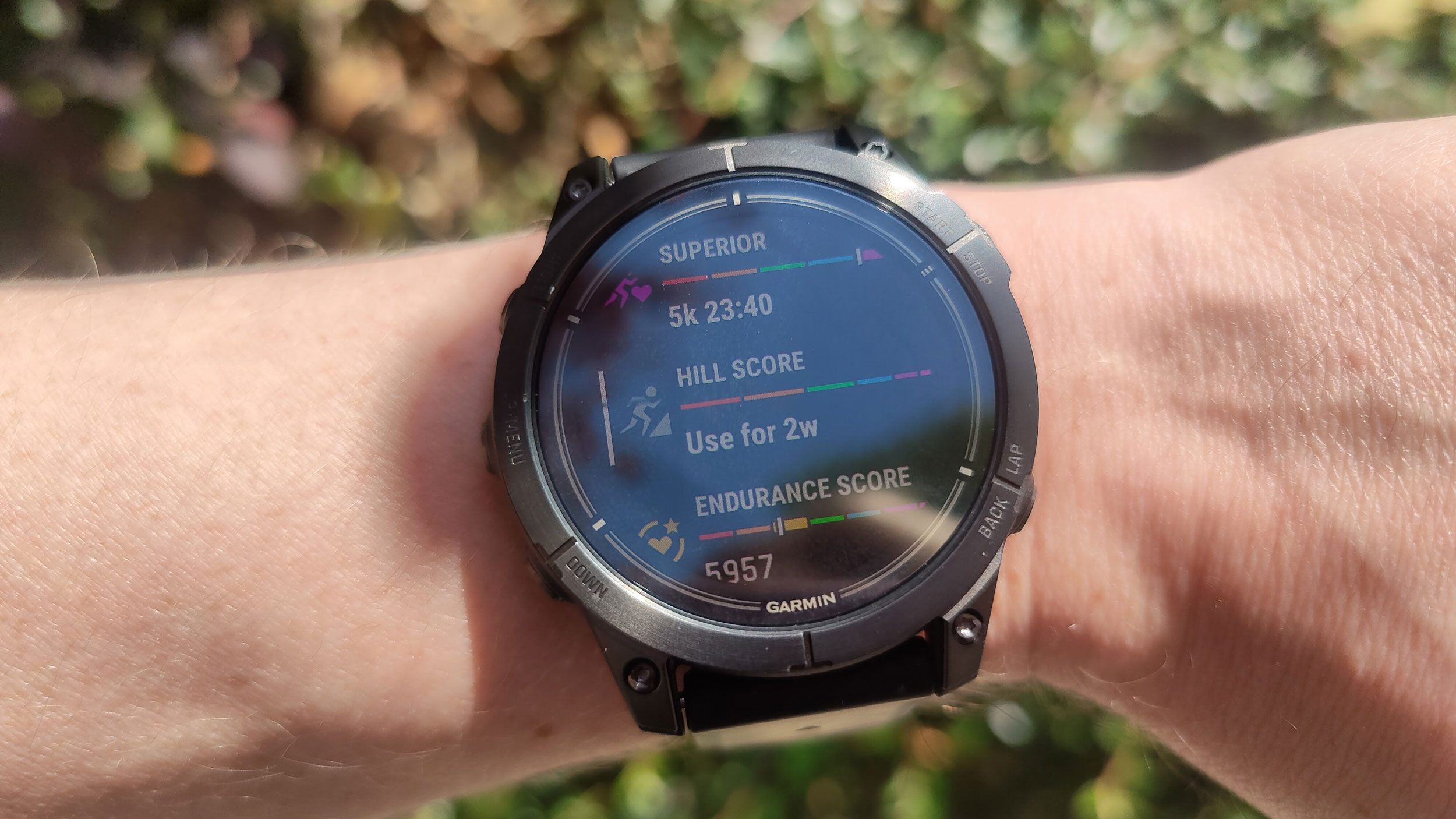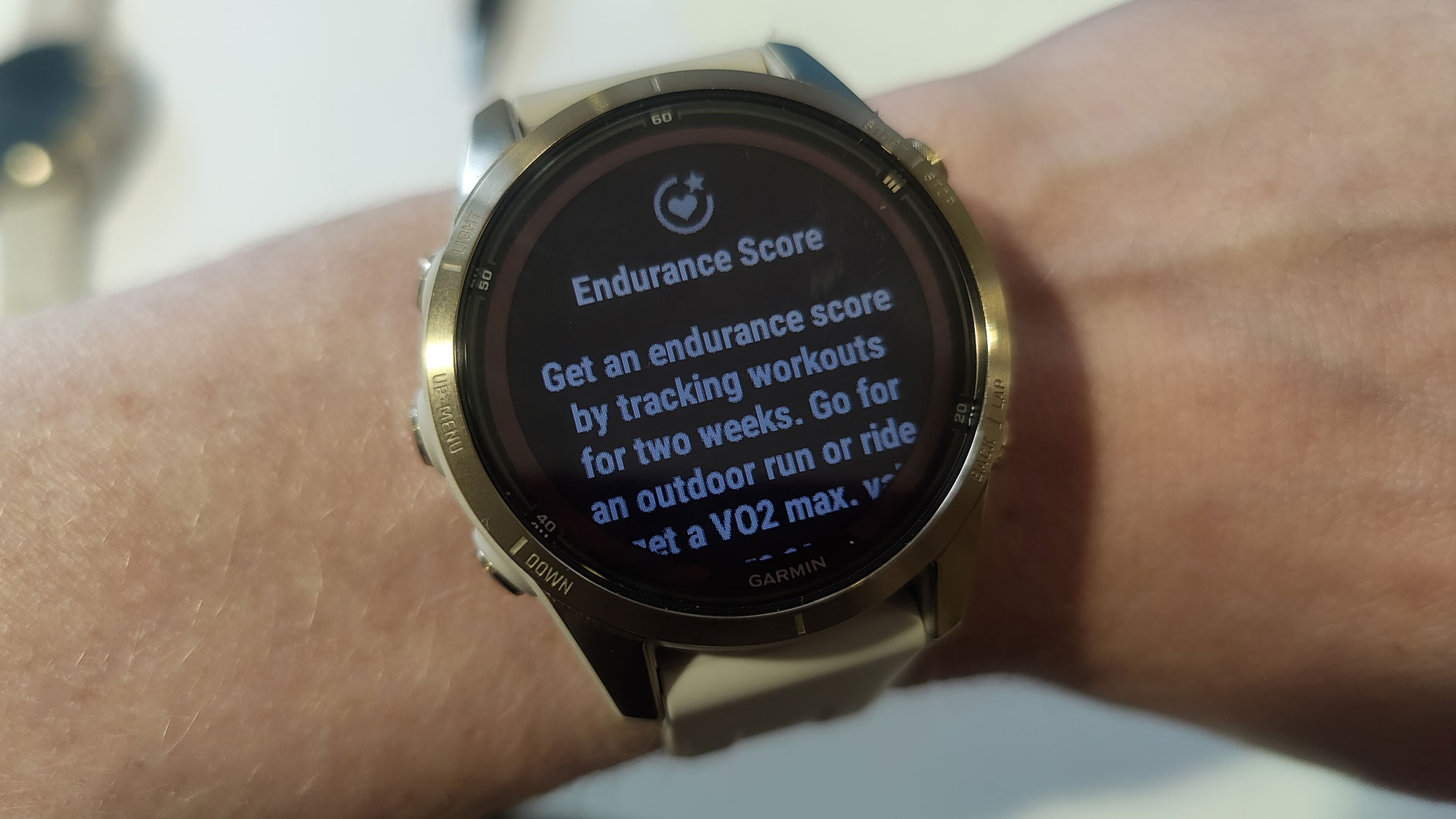Thanks to the Garmin Epix Pro, I've started doing hill sprints – even though I hate them
How Hill Score and Endurance Score have changed my training

Since completing the Brighton Marathon a couple of months ago, I haven't really been running very much. Instead, I’ve been revelling in the fact that I don’t actually have to run if I don’t want to, using that time in the gym, doing yoga and lifting weights for a bit of variety. As a result, my workout bag smells faintly of protein powder instead of sweat and bananas, with the number of runs down to one or two a week, rarely covering a distance over about five miles.
However, all that changed with the launch of two new additions to the roster of the best Garmin watches : the Garmin Fenix 7 Pro and the Garmin Epix Pro. I was lucky enough to try the Fenix 7 Pro shortly before the launch, and I have the Garmin Epix Pro on my wrist as we speak. It’s very similar hardware-wise to the existing Fenix 7X and Garmin Epix (Gen 2), with a few new features. The most notable for me have been two new metrics: Hill Score and Endurance Score.
What is Garmin's Endurance Score?

An Endurance Score is defined by Garmin as “a feature on select Garmin devices designed to connect the dots between fitness, training and your ability to sustain performances over long periods. Your endurance score is a dynamic number that increases and decreases to reflect changes in your endurance.”
Garmin used to measure this with a simple VO2 figure, which lots of the best smartwatches can deliver. VO2 max indicates the maximum amount of oxygen your body can use during exercise: generally, the more oxygen you can use, the more efficient you are.
However, Garmin is saying VO2 max is only half the story: your Endurance Score also considers your activity history and the how challenging your workouts are, to create a constantly fluctuating score between 1 and 9999.
Garmin’s Endurance Score ratings range from "recreational" at their lowest point to "elite" at the highest. You can see the full list of rating categorised by age and gender here.
What is Garmin's Hill Score?

Hill Score is another new one for Garmin, and as you might have guessed, it’s a measurement of how good you are (or are likely to be) at running uphill – again, based on your VO2 max and training history.
Sign up for breaking news, reviews, opinion, top tech deals, and more.
Using GPS data from your runs, your watch looks at and logs segments of hill climbs with a gradient of 2% effort or more. This data comes from your runs, short or long, combining it with your VO2 max to deliver a single concise Hill Score.
Of course, Hill Score isn’t just about running uphill: it’s also an indicator of lower-body power, of the potential for explosive speed, and bigger effort on flat sections, too. Hill Score ratings take two weeks of consistent training to generate and range from 1 to 100, again with a classification of "recreational" at the low end, to "elite" at the highest level. You can see the full list of Hill Score ratings here.
The Observer's Paradox
As previously mentioned, I’ve not been running much of late, strapping on a Garmin again after a few months of light, mostly untracked running. I’ve been keen to put Garmin’s new metrics to the test to get a proper sense of how the watch operates; but the very nature of having a Hill Score as a rateable, quantifiable metric has encouraged me to train.
Like any sport, running can be broken down into sections, with each athlete's performance differing in these sections. For example, when I train for a long race, I’m good at endurance running, but not so good at sprints. When I spend more time in the gym or on the yoga mat, I might improve my explosive speed from all the squatting (and you can check our list of strength and conditioning exercises to get better at running), but my endurance will nosedive as a result of spending less time on the roads.
I have never considered training in a specific area to get better at running uphill. But now I know that the Garmin will generate a Hill Score in less than two weeks, I kind of want a good one. So here I am, deliberately seeking out overly hilly routes and integrating hill sprints – which are horrid at the best of times, and absolutely savage in the summer heat– because I know Garmin is going to judge me on my hill performance. God, I hate it.
I have a sneaking suspicion I’m not the only Garmin user who will be so easily influenced; simply having the Hill Score and Endurance Score options available will encourage people to try to improve in those specific areas of running. No one likes to perform badly.
Right now, though, those scores are only available on premium, brand-new watches, so I imagine most people spending upwards of $800 / £750 / AU$1,200 on a fitness watch will be pretty good at running uphill in the first place – and are likely to be in possession of a set of the best running shoes to help them along the way.

Matt is TechRadar's expert on all things fitness, wellness and wearable tech.
A former staffer at Men's Health, he holds a Master's Degree in journalism from Cardiff and has written for brands like Runner's World, Women's Health, Men's Fitness, LiveScience and Fit&Well on everything fitness tech, exercise, nutrition and mental wellbeing.
Matt's a keen runner, ex-kickboxer, not averse to the odd yoga flow, and insists everyone should stretch every morning. When he’s not training or writing about health and fitness, he can be found reading doorstop-thick fantasy books with lots of fictional maps in them.